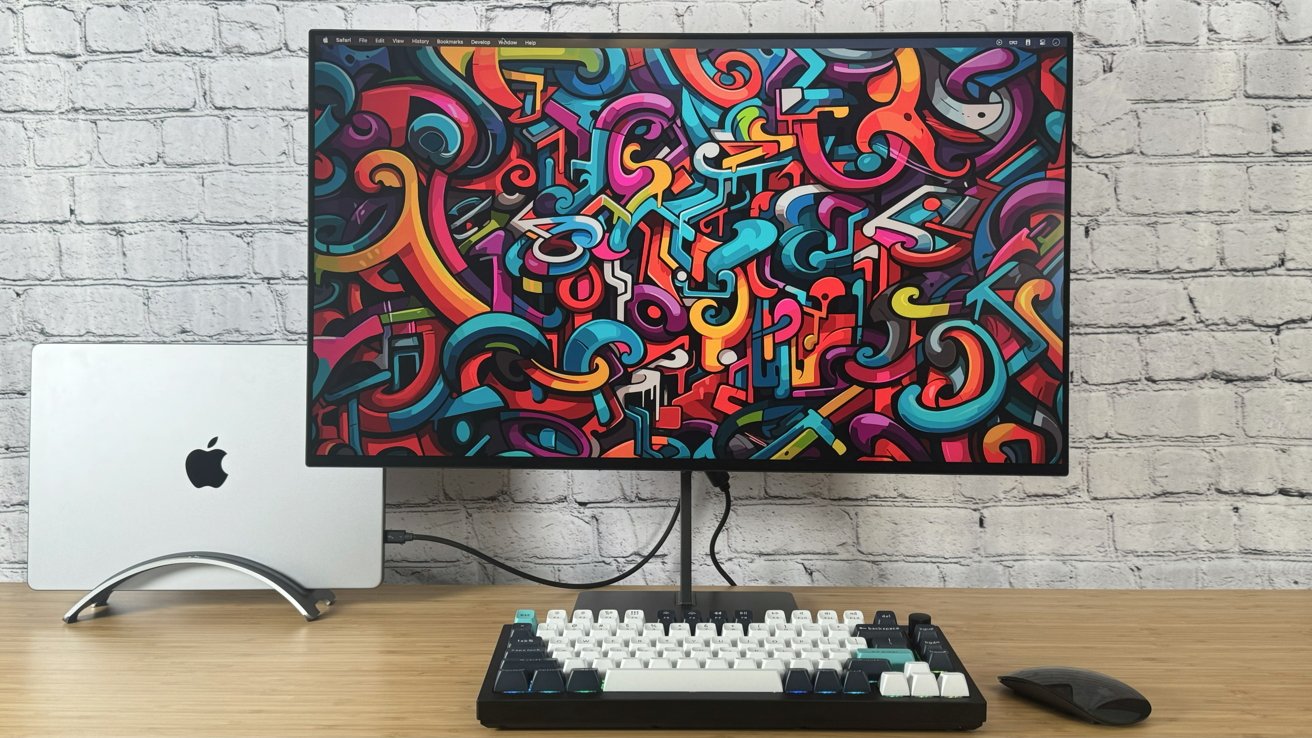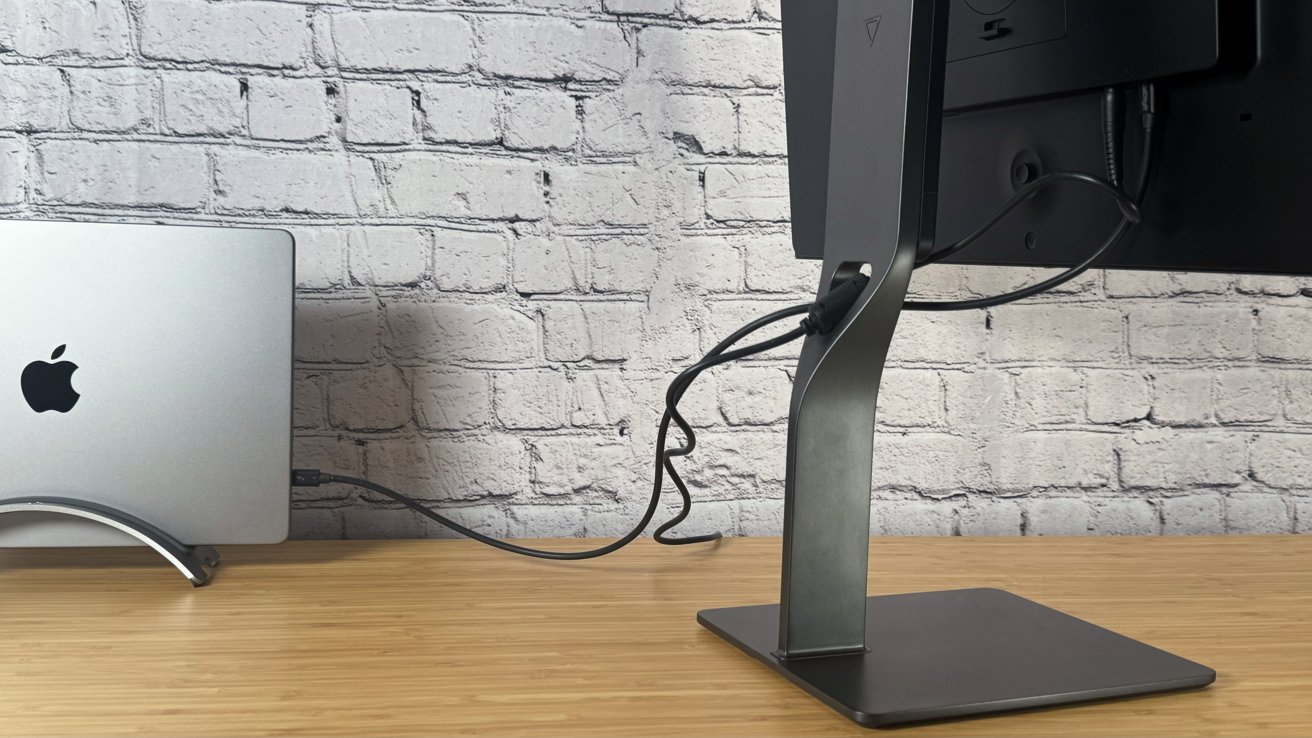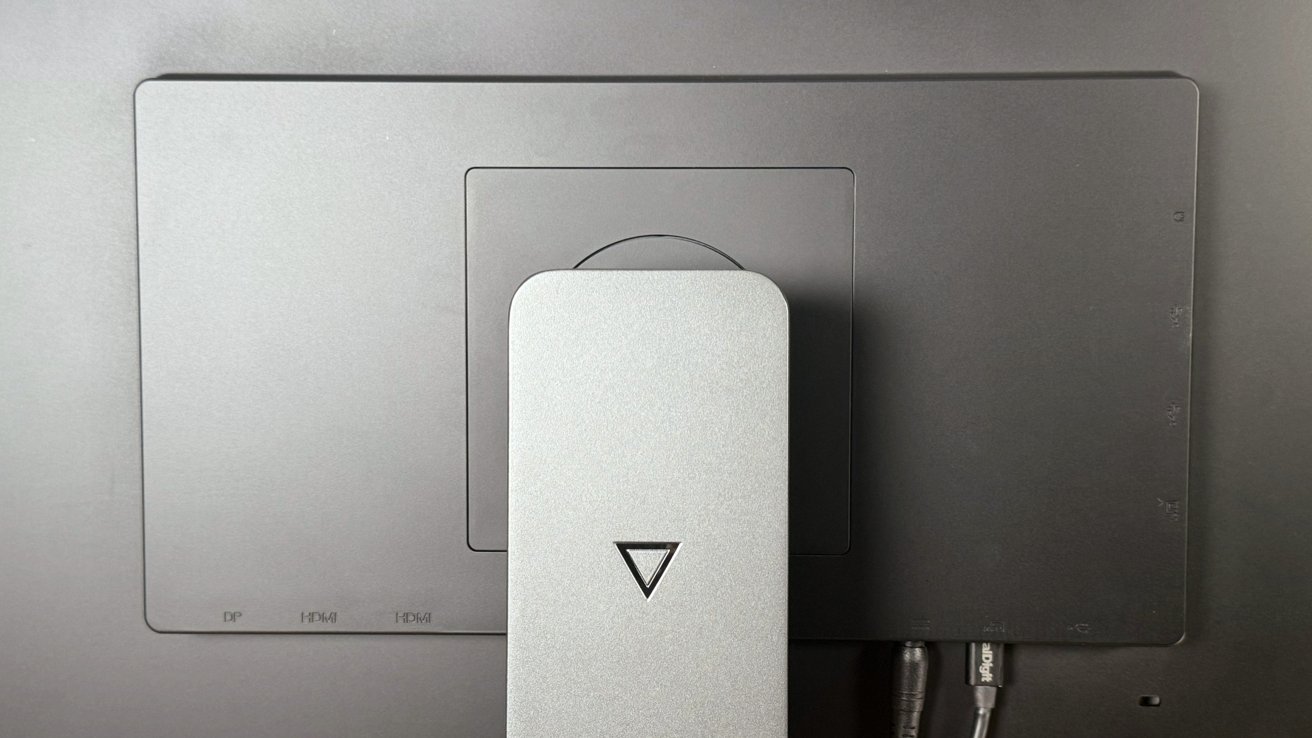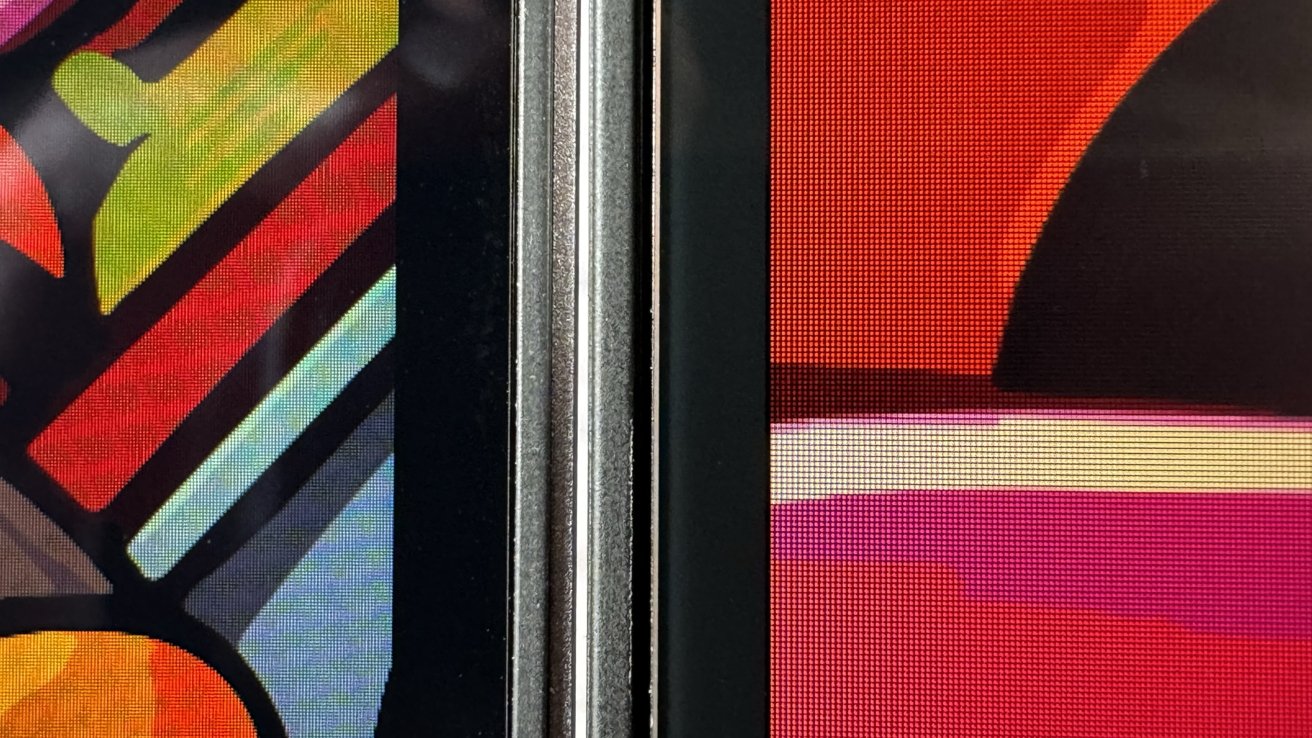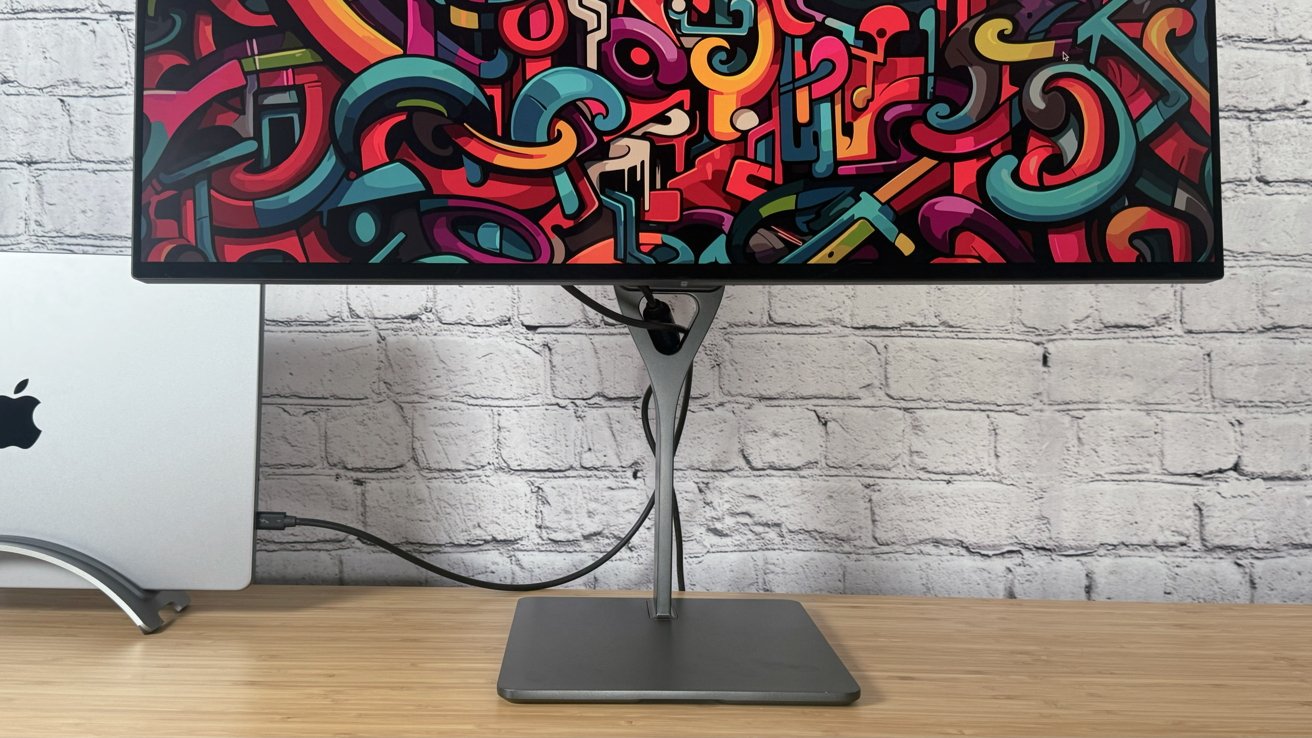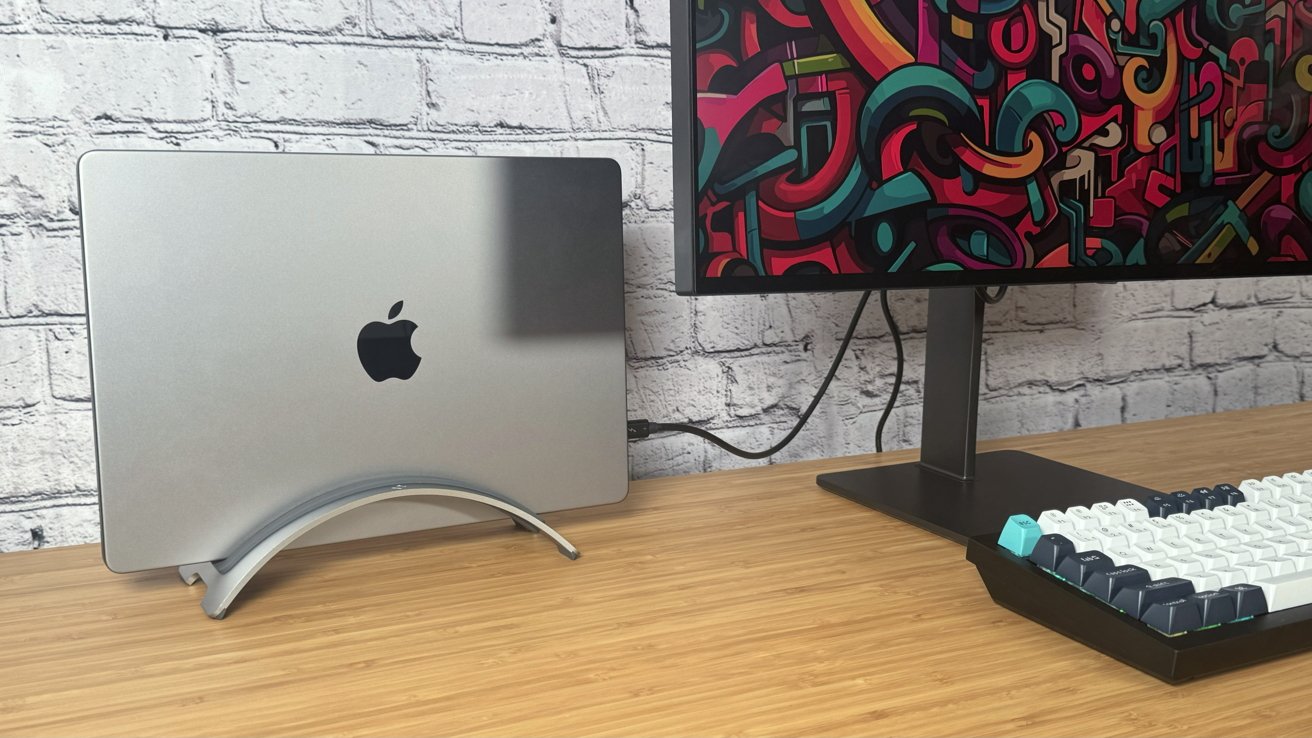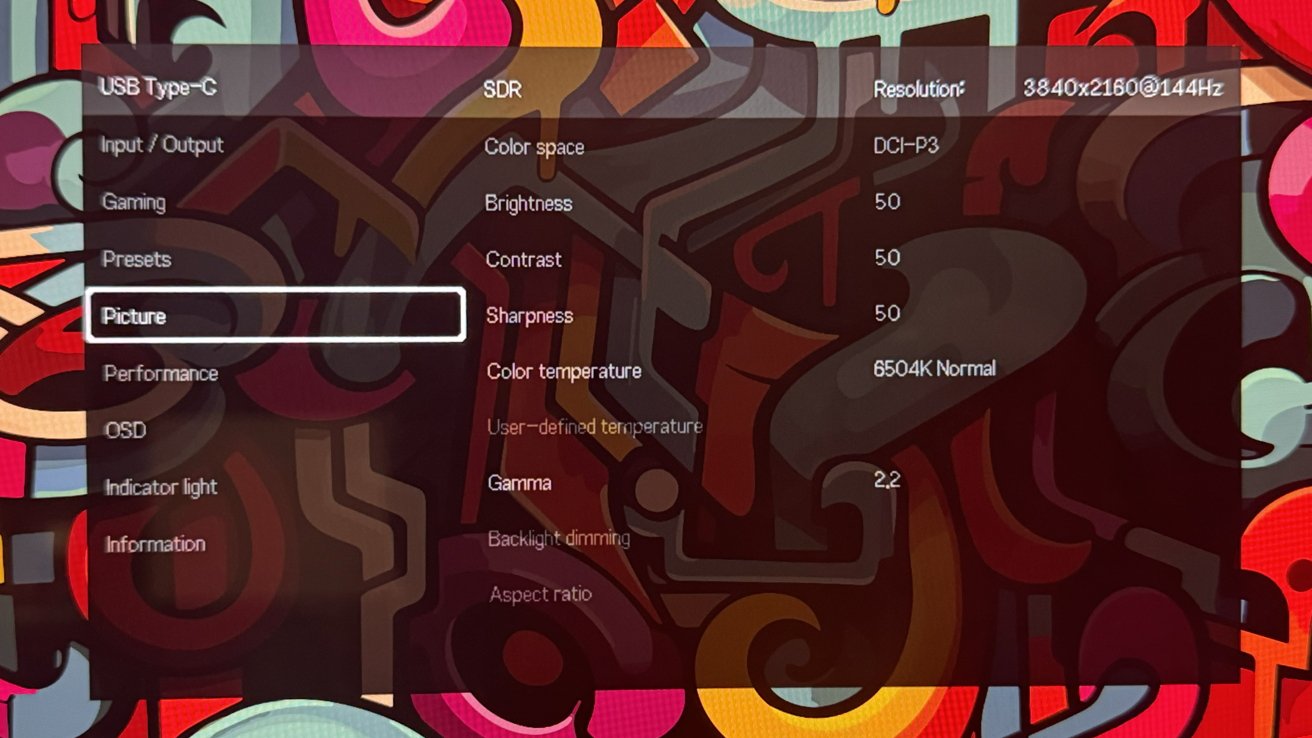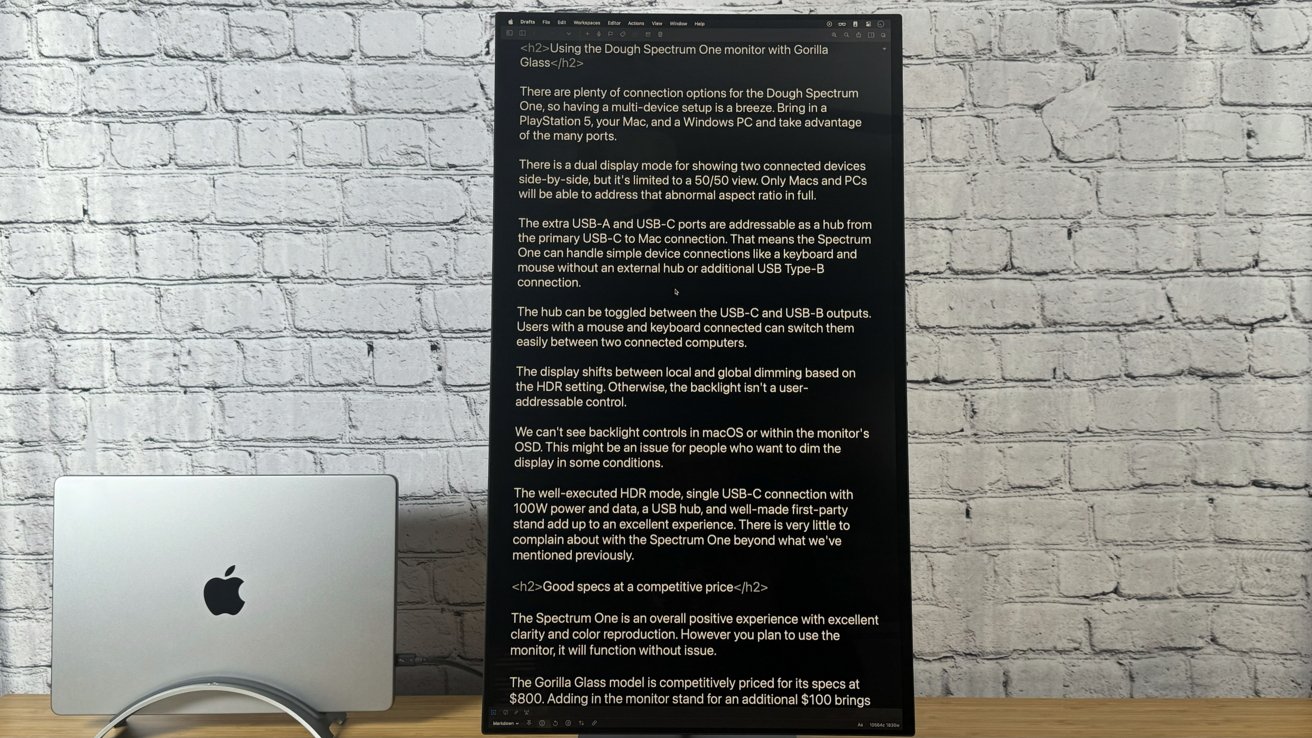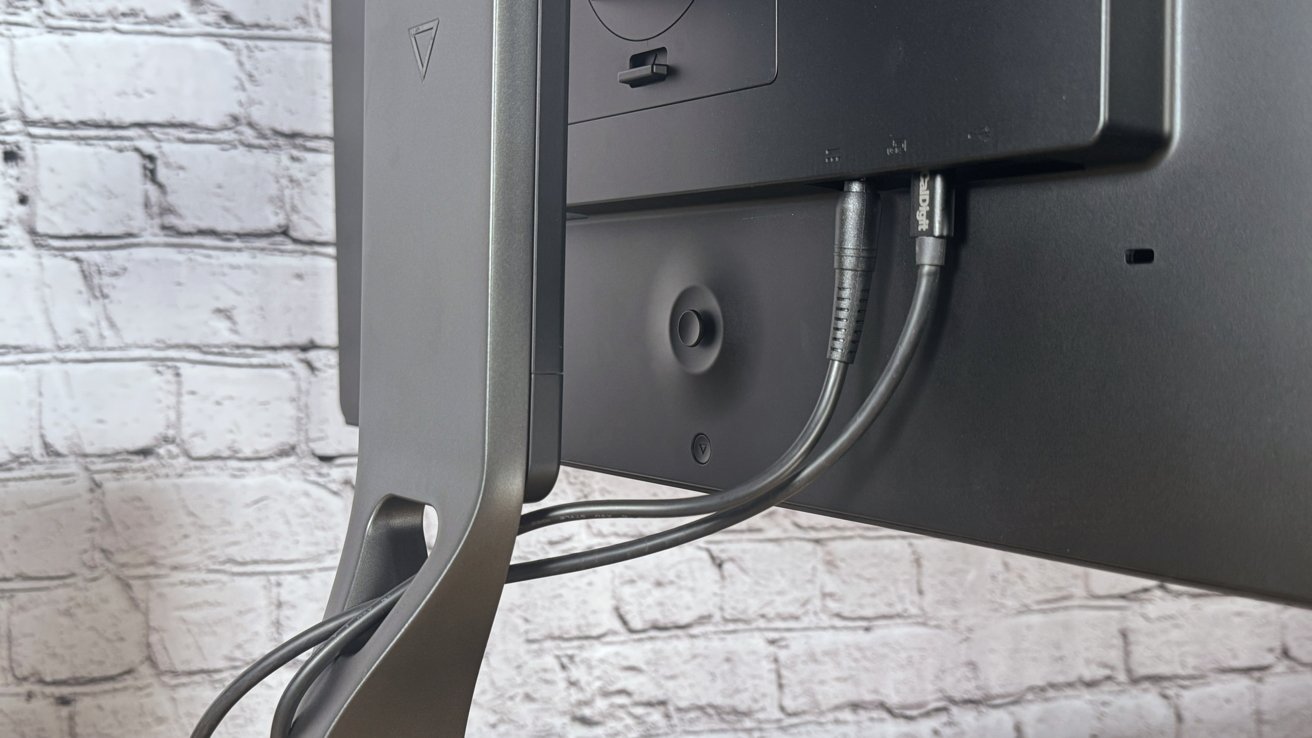Dough’s glossy 27-inch 4K HDR Spectrum One monitor may be our newest go-to recommendation for displays under $1,000 — especially since it has HDR 600 support and Gorilla Glass.
The monitor unicorn seemed to be a 27-inch 4K HDR display with USB-C at $800 or less, at least until recently. Dough’s Spectrum One monitor hits the spec bingo while coming in cheaper than competitors.
One standout feature is HDR 600 working to show HDR content without ruining everything else. Other monitors in this price range offer HDR 400, which we’ve noticed leaves the image discolored.
The Spectrum One stand comes at a $100 premium, but it is a must-have add-on, especially if you don’t already have a VESA stand ready. We’re quite happy with the ability to slide the monitor up and down or rotate it 90 degrees.
Apple’s Studio Display is our go-to monitor, but it is expensive at twice the price of similarly-specced displays. Of course, some of that Apple ecosystem magic and 5K resolution does come at a premium.
Out of the monitors we’ve reviewed, the Spectrum One is one of our favorites and can easily be recommended as an alternative to the Studio Display. Though users should know 4K at 27-inches isn’t native Retina.
Despite some odd points and a complicated history with the Eve brand, the Dough Spectrum One is an excellent option.
Dough Spectrum One monitor with Gorilla Glass review — design
Like most modern electronics with displays, monitors don’t have much to say about their design anymore. At least not when viewed from the front.
The optional Spectrum stand adds a thin, well-designed stand to the overall aesthetic, but otherwise, the Dough monitor isn’t opinionated. It’ll blend in with its edge-to-edge display, black bezels, and lack of branding.
The only distinguishing mark on the front is the status LED. Thankfully, it can be disabled from the display’s built-in OSD menu.
The monitor itself comes in at about one inch thick with a hump on the back for cable connections. There are nine total ports with the option to use the extra USB ports as a hub.
- 2x HDMI 2.1 ports
- 1x DisplayPort 1.4 port
- 1x USB 3.1 Gen 2 Type-C port with DisplayPort 1.4 compatibility and 100W PD
- 1x USB 3.1 Gen 2 Type-C port
- 2x USB 3.1 Gen 2 Type-A ports
- 3.5mm headphone jack
- USB Type-B
We tested the monitor over the single USB-C connection to our 14-inch MacBook Pro. It supported connecting at a variable 144Hz with HDR enabled.
The Dough Spectrum Stand we tested with the monitor can tilt 7 degrees down and 23 degrees up. It can rotate 90 degrees in either direction and adjust its height by 120mm.
A slight gap underneath the Dough Spectrum Stand allows a moderately sized cable to fit under without pinching. It’s a perfect size for managing our keyboard or trackpad cables.
The OSD menu offers easy controls for setting up different use cases, like rotating the display or setting up game modes. We’ve used both the horizontal and vertical modes during our testing.
When the display is vertical, it can be placed perfectly flat onto the stand below or tilted so the stand is hidden. Maneuvering these positions is simple enough as long as the connected cables have slack.
Most modern monitors include a way to navigate on-screen menus via buttons or a joystick. Spectrum One has a joystick, but thankfully, it also has a separate power button to help prevent accidental power cycles.
Dough Spectrum One monitor with Gorilla Glass review — specs
The display is a 27-inch panel with 3840 pixels by 2160 pixels. That’s 4K Ultra-HD, which isn’t quite Retina at the display size, but only those who sit close to their display will notice a difference.
We prefer the sharpness offered by the Studio Display at 5K, but text and video are sufficiently sharp at an average seating distance from the Spectrum One.
The HDR mode is rated for VESA DisplayHDR600 with HDR10 compatibility. It’s a middle-of-the-road spec, but Spectrum One does a great job running in HDR mode without making non-HDR elements look washed out.
Beyond being well-specced for its price, the Spectrum One Stands out in how it designed the display. We tested one of the Gorilla Glass models, and it’s a winning feature.
Gorilla Glass, known for its clarity and durability, is used by Apple on its products. Dough aimed to match the display clarity by utilizing an even higher quality glass with Corning’s DXC technology.
The glass is built to reduce the harshness of reflections by having the incoming light cancel itself out. We’re writing this review with a window at our back, and while visible, it’s not a near-mirror reflection like what’s shown on our iPad.
Most displays on the market will default to a matte display finish to eliminate glare, but this reduces brightness and makes images less sharp. Spectrum One also offered a glossy display option, which increased sharpness, but the Gorilla Glass model is a step above that.
Dough has a Spectrum Black monitor, which comes with OLED and will significantly improve back levels and contrast. The Spectrum One is a standard LED with IPS, which means blooming around text on dark backgrounds, but nothing unexpected.
Spectrum One doesn’t have any built-in microphones, webcams, or speakers.
Using the Dough Spectrum One monitor with Gorilla Glass
The Dough Spectrum One has plenty of connection options, so having a multi-device setup is a breeze. Bring a PlayStation 5, a Mac, and a Windows PC to take advantage of the many ports.
There is a dual display mode for showing two connected devices side-by-side, but it’s limited to a 50/50 view. Only Macs and PCs can address that abnormal aspect ratio and fill the display halves.
The extra USB-A and USB-C ports are addressable as a hub from the primary USB-C to Mac connection. That means the Spectrum One can handle simple device connections like a keyboard and mouse without an external hub or additional USB Type-B connection.
The hub can be toggled between the USB-C and USB-B outputs. Users with a mouse and keyboard connected can switch between two connected computers easily.
Backlight dimming is controlled automatically with no user-accessible options. We can’t see backlight controls in macOS or within the monitor’s OSD, which might be an issue for people who want to dim the display in some conditions.
There is an option for changing display settings like “brightness” and “contrast,” but these settings relate to how bright the white elements of the display can get. Lowering this version of brightness can make the picture dimmer, but that changes how content is reproduced, not how bright the backlight is.
The display appears very bright in dim rooms.
The well-executed HDR mode, single USB-C connection with 100W power and data, a USB hub, and well-made first-party stand add up to an excellent experience. There is little to complain about with the Spectrum One beyond what we’ve mentioned.
Good specs at a competitive price
The Spectrum One is a positive experience with excellent clarity and color reproduction. However you plan to use the monitor, it will function without issue.
The Gorilla Glass model is competitively priced for its specs at $800. Adding in the monitor stand for an additional $100 brings the price closer to the general spec range the Spectrum One offers.
Apple’s consumer-focused monitor starts at $1,599, a significant premium for the ecosystem advantage. We can recommend that those willing to live without the native Retina resolution look at Spectrum One in the sub-thousand-dollar range.
Spectrum One checks many of the boxes Apple’s display does. It has the P3 color gamut, peak brightness at 750 nits, and Gorilla Glass, plus the bonus of HDR support.
Addressing some concerns with Dough, formerly Eve
If you follow Apple and tech news regularly, you may have heard of a company called Eve (No, not the smart home one). The company faced public backlash due to complaints about products and accusations of mishandled refunds.
We talked with Dough, formerly Eve, to ask about these issues. They’ve reassured us that the isolated incident has long since been resolved, and no such complaint has been issued by customers recently.
Eve changed its name to Dough to have a trademarkable name in the United States, which lets it sell monitors through reputable retailers like Best Buy or B&H.
From our testing of this monitor and our interactions with the company, it seems whatever issues Eve had in the past aren’t present today. However, we felt it necessary to point this history out, as we’re certain some of our more scrupulous readers would have questions.
To be clear, the Spectrum One we’re reviewing has no issues with operating or turning on. The complaints users had years ago about previous Eve monitors are not present here, and the company has since restructured, offered refunds, and no longer licenses its technology.
Eve’s rocky past hasn’t colored our review, but we only offer this information for total transparency about the brand.
Dough Spectrum One monitor with Gorilla Glass review — Pros
- Clear and sharp picture
- Gorilla Glass brings it closer to an Apple-specced product
- Can turn off front LED
- HDR mode doesn’t ruin non-HDR content
- Single USB-C connection for power and display
Dough Spectrum One monitor with Gorilla Glass review — Cons
- Can’t adjust backlight brightness
- Firmware upgrades, if needed, can only be installed via Windows
- No built-in speakers
- 4K is fine, but it isn’t native Retina
Rating: 4 out of 5
The specs and price of the Dough Spectrum One are competitive, though it lacks the ability for users to control overall display brightness.
Where to buy the Dough Spectrum One monitor with Gorilla Glass
Purchase the Dough Spectrum One monitor with Gorilla Glass for $799 or $898 if you add in the optional Spectrum Stand. The Glossy option is still around at a discount if users want all the specs with a slightly lesser display cover.


